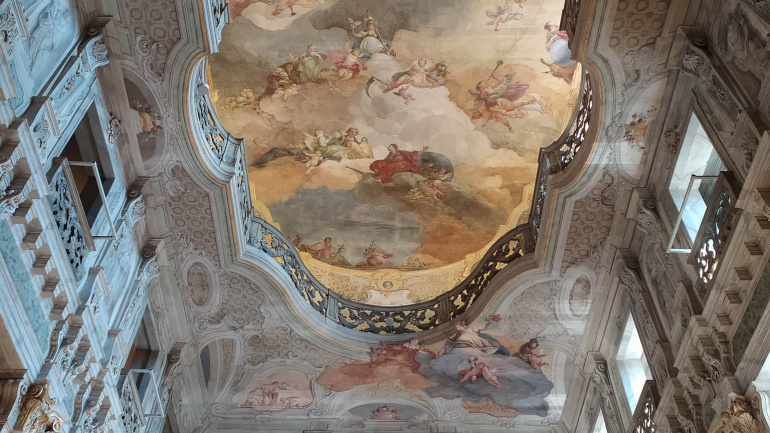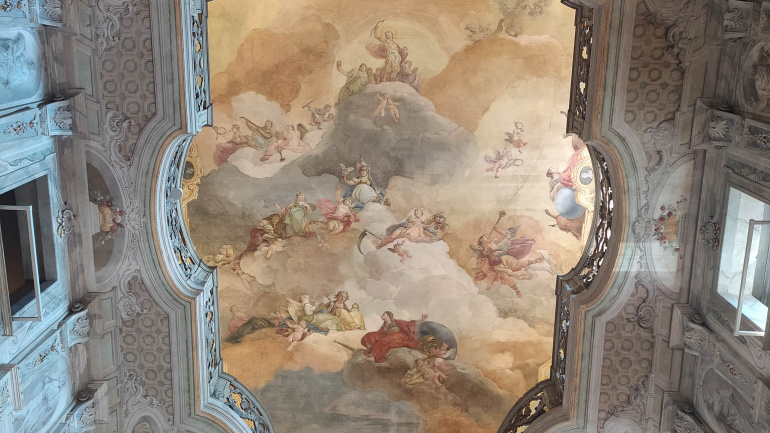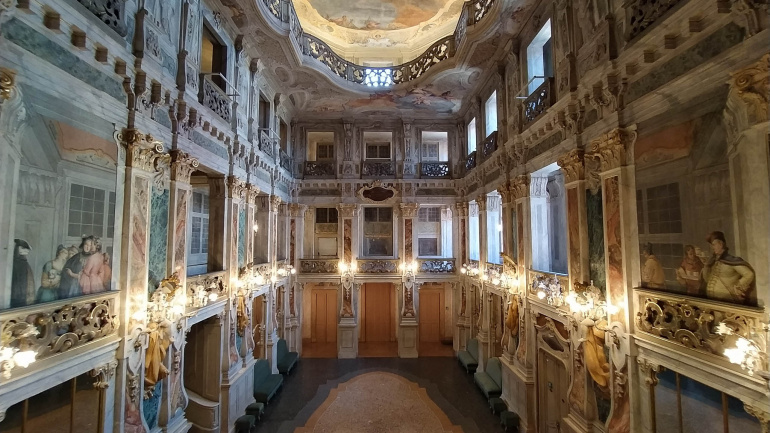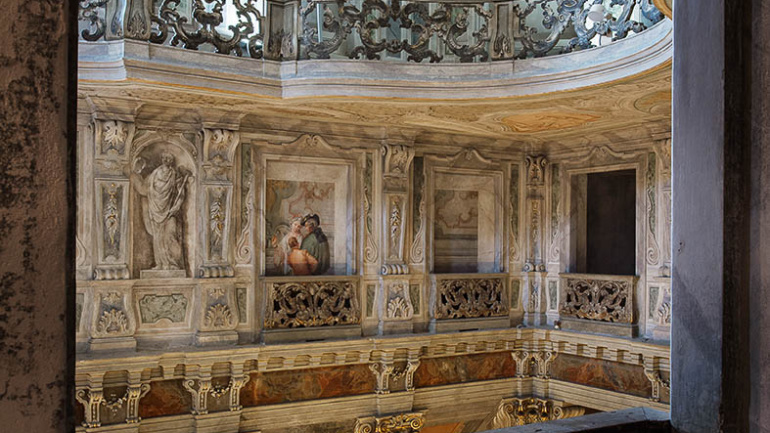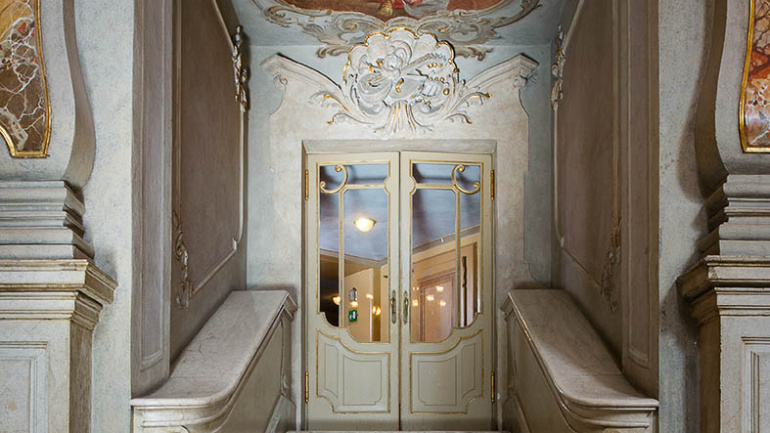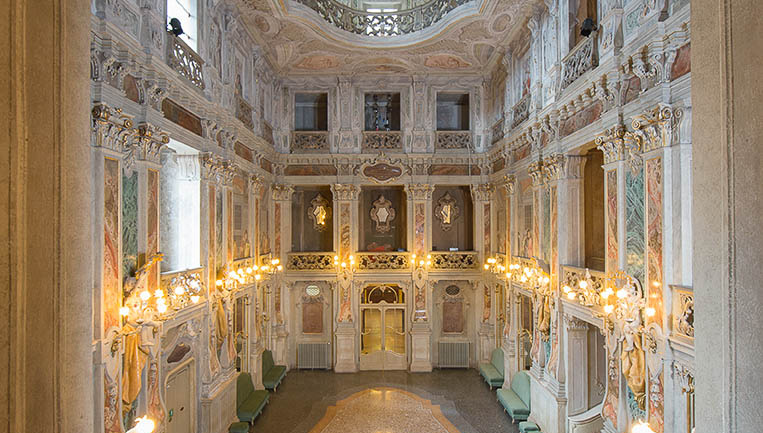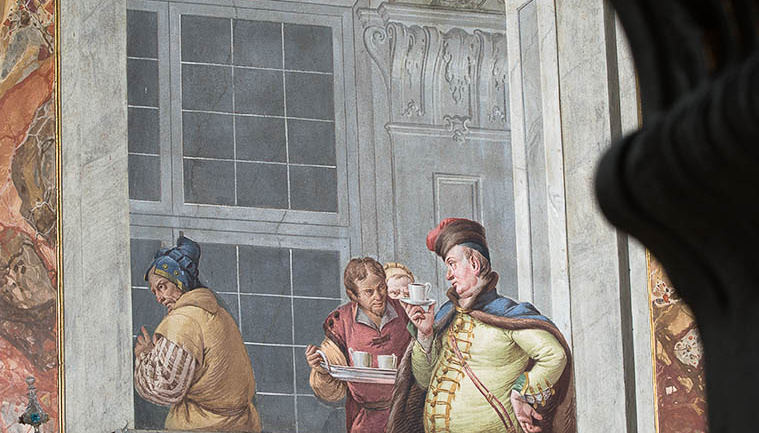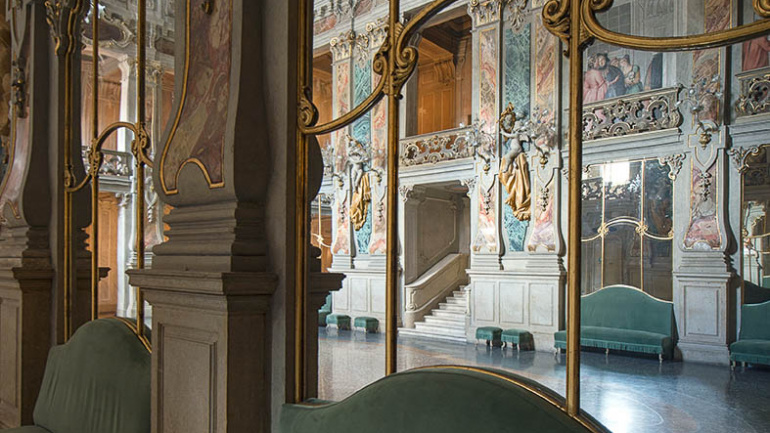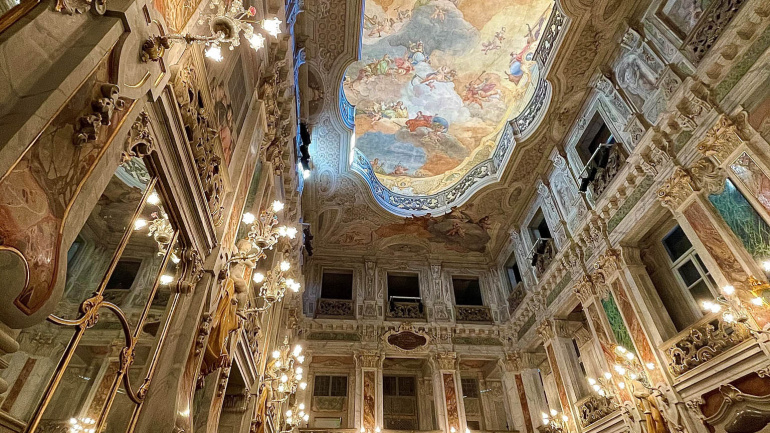The Ridotto
Inaugurated on March 22, 1772, this space was one of the main rooms of the Accademia degli Erranti, an ancient seventeenth-century institution that occupied this same site before its transformation into a theatre venue. Created as a meeting hall for the academicians of the time, the Ridotto del Teatro Grande (or Foyer), is perhaps one of the most admirable examples of eighteenth-century architectural splendor applied to a performing arts institution.
The room, found in all modern theatres, is adjacent to the larger theatre hall, where performances are attended, and was primarily intended, in the nineteenth century in particular, for gaming and smoking. Now, the audience stops in the Foyer before the start of the performances and during the intermissions, as the Cafè is often open for a coffee or a drink.
The hall currently consists of a series of pilasters arranged around the perimeter between which are loggias with pierced parapets, distinctive elements of the room. The perimeter walkability of the hall, rendered in the upper part by the galleries, is resumed in the ground portico and in the side loggias made through pictorial illusions.
The architect Antonio Marchetti completed the masonry work in 1765, while Venetian painters Francesco Battaglioli and Francesco Zugno created the ornamental decoration in 1771.
Evident throughout is the desire to expand the interior space and to create a versatile destination to be adapted to the different needs of the room’s use: meetings and conversations, ceremonies and games. Despite the decorative interventions due to the “restoration” carried out by Antonio Tagliaferri in 1894 (addition of the mirrors, plaster putti by Francesco Gusneri and frescoed statues by Bortolo Schermini), the hall remains among the most interesting 18th-century Brescian achievements because of its very special architectural structure with loggias and frescoed decoration.
